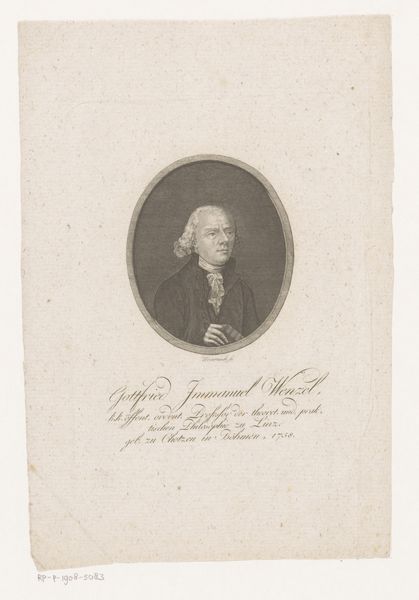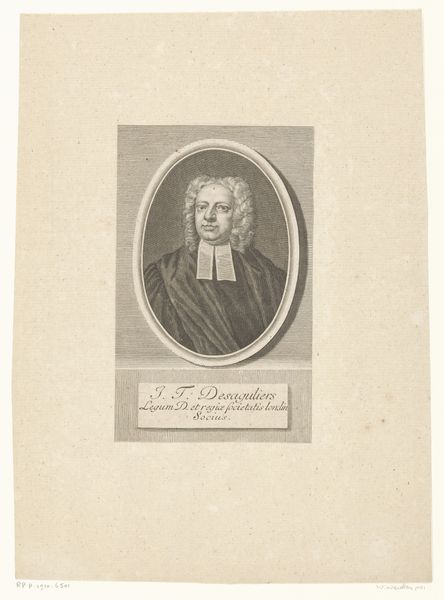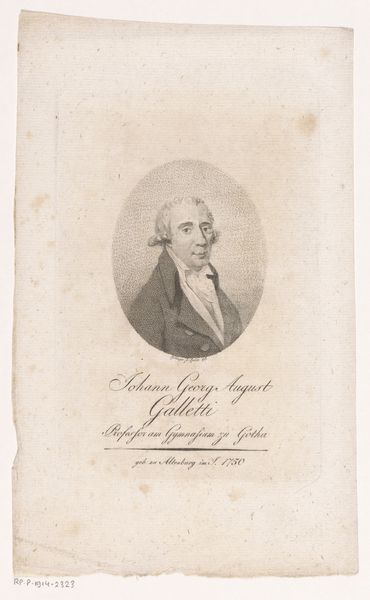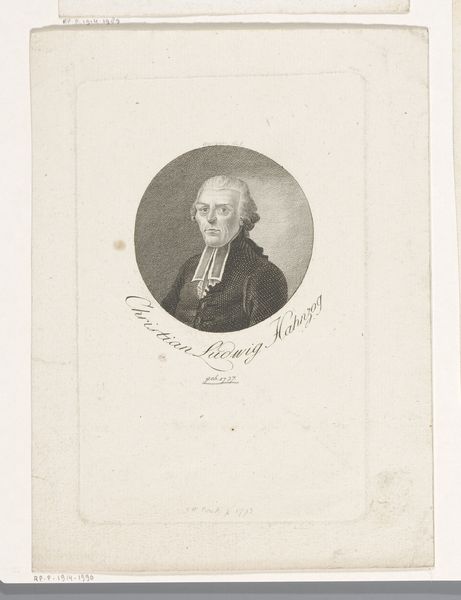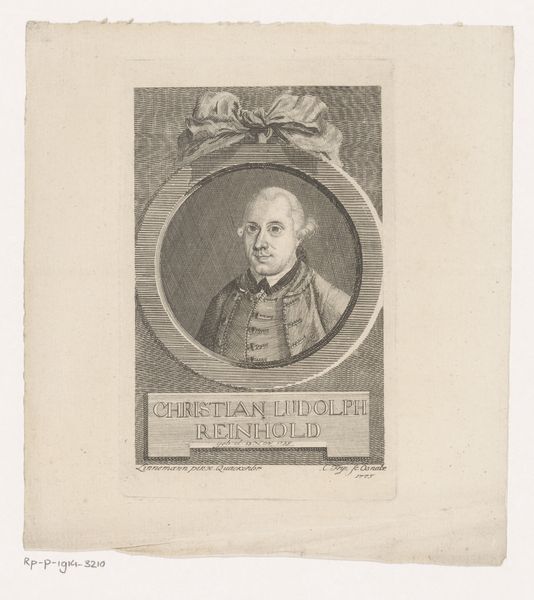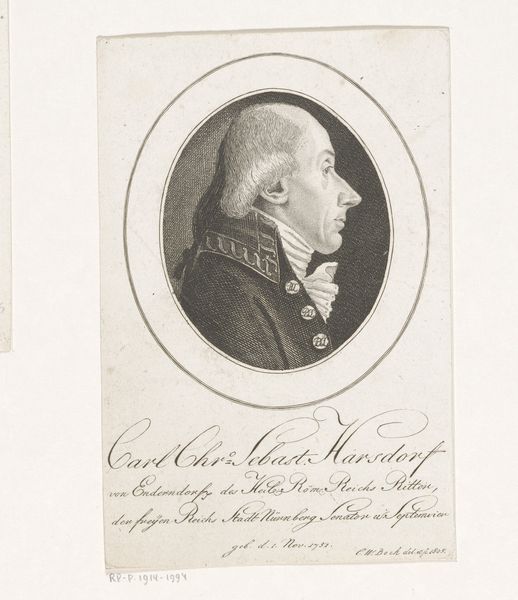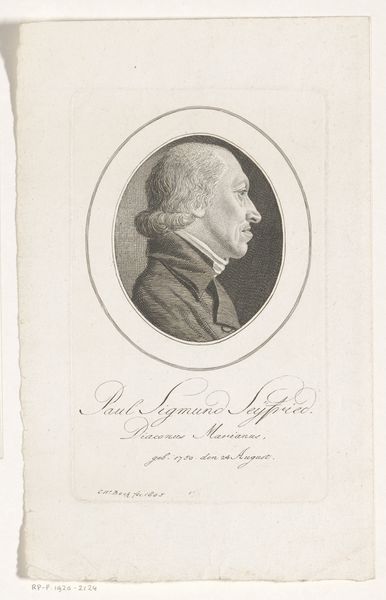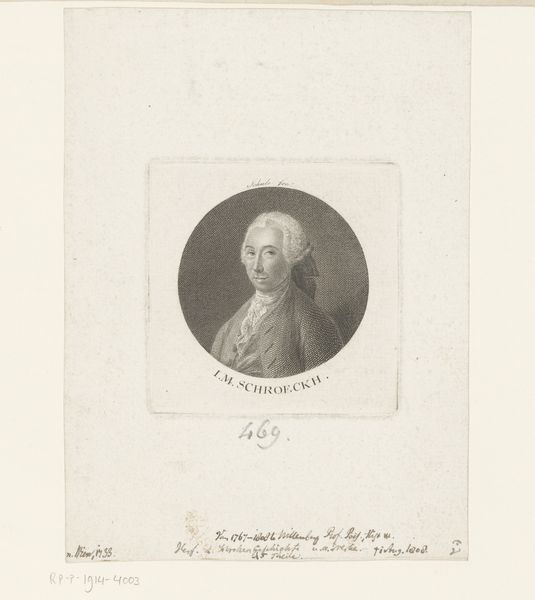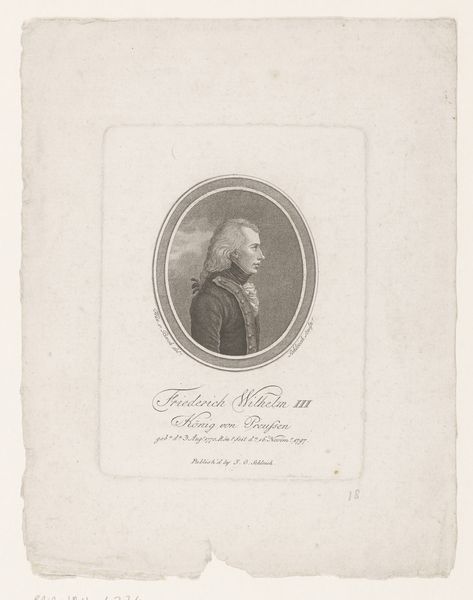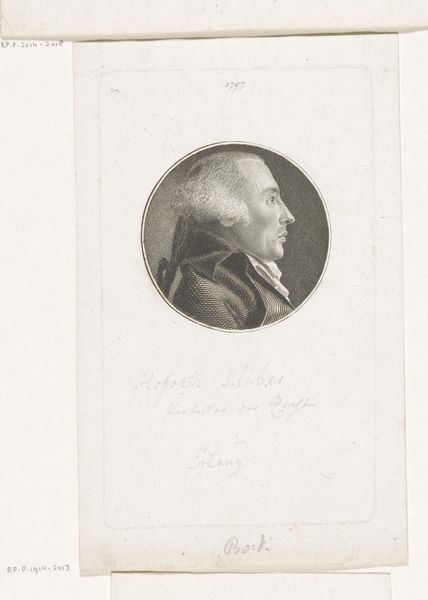
engraving
#
portrait
#
neoclacissism
#
engraving
Dimensions: height 172 mm, width 100 mm
Copyright: Rijks Museum: Open Domain
This print, portraying Johann Andreas Gottfried Schetelig, was made by Christoph-Wilhelm Bock using the technique of etching. This is an intaglio process, meaning that the image is incised into a metal plate, which then holds the ink. The character of the etching is closely linked to the qualities of the metal itself. The artist would have used a sharp needle to draw through a waxy ground, exposing the metal. The plate was then submerged in acid, which bit into the metal, creating the lines. These lines vary in depth and thickness, giving the portrait a delicate, almost ethereal quality. Prints like this one were relatively inexpensive, so they circulated widely. Bock produced this portrait to commemorate Schetelig, and the design reflects the tastes and social structures of the time. By focusing on process, we can understand how the value of such an image resides not only in the skill of the artist, but also in the technology that allowed for its reproduction and broad distribution.
Comments
No comments
Be the first to comment and join the conversation on the ultimate creative platform.
